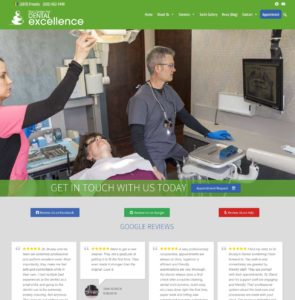
While the dentist performing the extraction will usually explain the procedure before starting, here is what to expect when visiting the family dentist for a simple or surgical tooth extraction.
Simple Tooth Extractions
When a tooth is decayed, fractured, or abscessed, a dentist will typically recommend a tooth be extracted if it can’t be strengthened or fixed using a crown, filling, or other treatment.
Unfortunately, sometimes there is too much damage for predictable, long-term repair to be possible. Other times, the financial costs to fix the tooth can’t be justified given the extent of other problems in the mouth. In these instances, the dentist will likely recommend an extraction. Other reasons a dentist may recommend a simple extraction include cases when teeth are preventing other teeth from erupting, such as baby teeth that didn’t fall out in time.
The Simple Tooth Extraction Process
The process of removing a tooth with simple extraction begins with the dentist or oral surgeon taking any necessary X-rays of the area. This helps the dental professional focus in on the proper tooth and see every aspect of the tooth, from the roots to the sockets, and even the bone, nerves, sinuses, and other structures underneath the gums. A panoramic X-ray may even be used, which captures the entire mouth.
A simple tooth extraction is performed when a tooth can be seen in the mouth, meaning that the tooth has already erupted, or broken through the surface of the gums.
The procedure is known as simple because the tooth is removed using minimal instrumentation. The dentist will use a gentle reciprocating movement, or “jiggle” the tooth using a specially designed instrument known as a forceps, then wait while a patient’s own body causes the tooth to become loose. When the tooth feels sufficiently loose, the tooth is simultaneously jiggled and lifted out of the socket– roots and all.
Simple extractions are so simple, they can be performed with a mere local anesthetic.
Once the anesthetic is administered, the patient won’t feel pain, but will instead feel pressure, which makes simple extractions a pain-free experience.
The dentist will then clean the socket where the tooth was extracted from so that the area can heal naturally. In the meantime, the patient will be given strict at-home instructions that include:
- Biting on gauze to allow for a clot to establish.
- Keeping the head more elevated to reduce swelling.
- Sticking to foods that are soft, at least for a few days. After that, patients are usually instructed to introduce new foods gradually based on their comfort levels.
- Except for the day of surgery, gently swishing with warm salt water 2 -3 times a day to keep the extraction site clean.
- No spitting the day of surgery, and no smoking for at least 4 days following extraction. Doing so could loosen the blood clot from the hole where the tooth resided, slowing the healing process.
Surgical Extraction
If extracting the tooth is going to require a more complex procedure, such as Wisdom tooth removal or removal of multi-rooted teeth, a surgical extraction may be necessary.
Other reasons for surgical extraction include teeth that have broken off or decayed to the gum line, teeth that are impacted, and those that simply refuse to erupt. In this case, the dentist or oral surgeon may make a small incision into the gum in order to surgically remove the tooth. Other times, no incision is needed but the tooth needs to be sectioned so that each root can be taken out separately.
Since surgical extraction is surgery, it comes with the typical risks, and some healing time may be necessary. The same at-home care tips may come into play, along with ice for swelling and an over-the-counter pain reliever for any lingering discomfort. In some cases, a prescription pain reliever will be given. Any soreness that is felt usually dissipates within a few days, depending on the reasons for the extraction and how many teeth were extracted.
After Extraction
While the tooth is healing, the dentist or oral surgeon may fit the patient with a temporary tooth. This will disguise the fact that the tooth is missing, preserving the patient’s confidence and oral function. Once the area has healed, the discussion can then turn to more permanent treatment options, such as dental implants.
The Art of the Gentle Dental Extraction
Dr. David Brusky believes in very gentle dental extractions, and that includes both simple and surgical extractions. The general and cosmetic dentist, who serves the areas of Howard, Pulaski, Shawano, De Pere, and Seymour, uses the latest anesthetics and extraction techniques to ensure patients are comfortable during their procedures, and after.
Dr. Brusky said, “I remain current on advancements in local anesthesia to ensure a pain-free dental visit. Each of my patients knows that a visit to the dentist’s chair is always a comfortable one, even though we may be performing a procedure that has a lot of fear associated with it, such as a dental extraction.”
To learn more about tooth extractions, contact the office of Dr. David Brusky at (920) 662-1440.













I’m here from out of town. I will be here till Thursday of next week. The 2nd of September I’m scheduled for an extraction and bone graph. Right now it’s infected and very painful. Any way I can get in quickly and get it done?